13 DAYS OF KIRBY 100: Co-editor Jon B. Cooke takes you behind the scenes.

—
Welcome to 13 DAYS OF KIRBY 100, our celebration of Jack Kirby’s centennial, produced in conjunction with TwoMorrows Publishing. Over 13 days, we’re serializing the publisher’s forthcoming book KIRBY 100, co-edited by Jon B. Cooke and John Morrow, and featuring essays and artistic contributions by 100 of the biggest names in comics, such as Alex Ross, Dave Gibbons, Walt Simonson, Mike Allred and many, many others.
For the complete 13 DAYS OF KIRBY 100 Index of stories and features, click here.
—
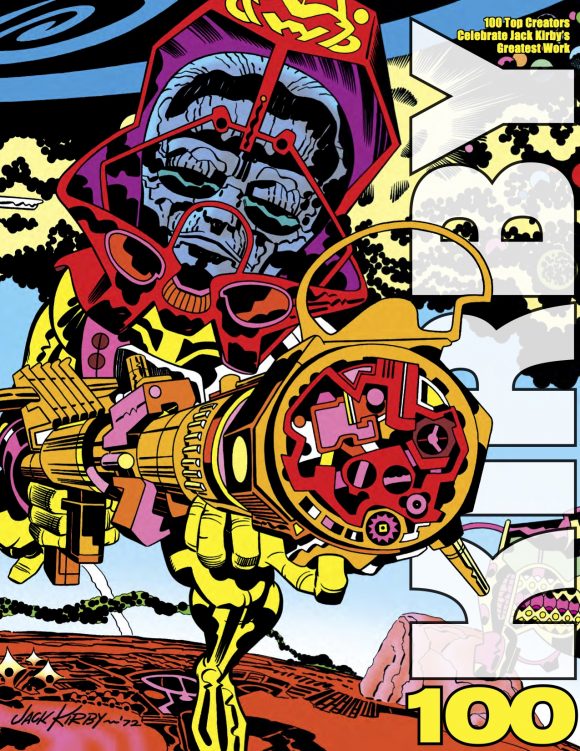
Jon B. Cooke is the co-editor of Kirby 100 and if you take a step back you have to be struck by just what an undertaking it must have been to put this book together.
Here, in a Q&A, he lifts the veil on what it took to create a tribute that is destined to become one of the must-have books not just for fans of Jack Kirby but for fans of comics:
—
Dan Greenfield: Where did the idea to do Kirby 100 come from?
Jon B. Cooke: The notion came from a shared conviction of TwoMorrows publisher/Kirby 100 co-editor John Morrow and myself that the 100th birthday of Jack Kirby should not go unrecognized, particularly by the publisher of The Jack Kirby Collector. As for me (and as I write in the book’s afterword), I had long dreamed of doing something to honor the King of Comics and, for a time, longtime pal Cliff Galbraith (co-founder emeritus of 13th Dimension) and I were in the process of planning an event to commemorate Kirby on his centennial.
The initial idea was to have a banquet, in New York City, with a whole bunch of Kirbyheads having the opportunity to toast the comic-book genius and break bread together. Like I did for the H.P. Lovecraft Centennial, back in Providence, in 1990, I hoped to culminate the festivities by unveiling a plaque somewhere on the Lower East Side acknowledging Kirby’s achievements.
Though I hosted a meeting in San Diego at Comic-Con a few years back, and all who attended were quite receptive, it just never came together, despite the appreciated support of John Morrow, Karen Green, and some others. Anyway, Cliff was busy with his shows and I had my books and magazines to produce, so the chance to produce a book in honor of Jack was very welcome.
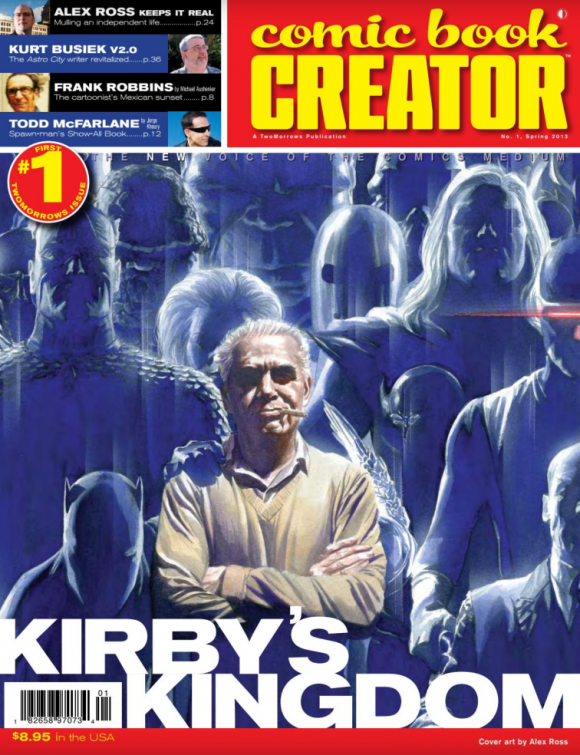
Dan: How did you pull it all together?
Jon: The conceit for the book was originally 100 top comic-book creators discuss their respective favorite Kirby single page or cover, chosen from a list TwoMorrows publisher (and book co-editor) John Morrow had painstakingly compiled of Kirby art that gave equal coverage of his vast body of work, which spanned between the late ’30s to the mid-’80s. I think it was I who tweaked the idea to singularly approach artists, much as we could have found 100 comic-book writers to wax on about Kirby! If that decision was prejudicial, blame me, but I certainly meant no offense. Anyway, I have a pretty thick Rolodex of artist contacts, whether mainstream, alternative, or only peripherally related to the field, so I sent out the invites.
I love artists. Hell, I called my first magazine Comic Book Artist, and my current periodical, Comic Book Creator, is overwhelmingly devoted to their kind. But organizing this book and seeing it through production was like wrangling kitty-cats. Though John Morrow had given agonizing attention to the spreadsheets that were shared with artists for them to choose their selected work from, many picked their own favorites not from the list, but from memories of first exposure to the King or sentimental favorites. (Thus you’ll see multiple entries for Fantastic Four #51, “This Man, This Monster,” and Sgt. Fury #13, to name a couple of instances.)
With that, John and I decided, even though two or more artists might pick the same work to examine—also since no one was getting paid in anything other than contributor copies—it was best to let the folks feel free to choose their own, duplicates notwithstanding. I do regret John fruitlessly spent so much time on that Excel file, but I know he and I are very, VERY happy with the end result.
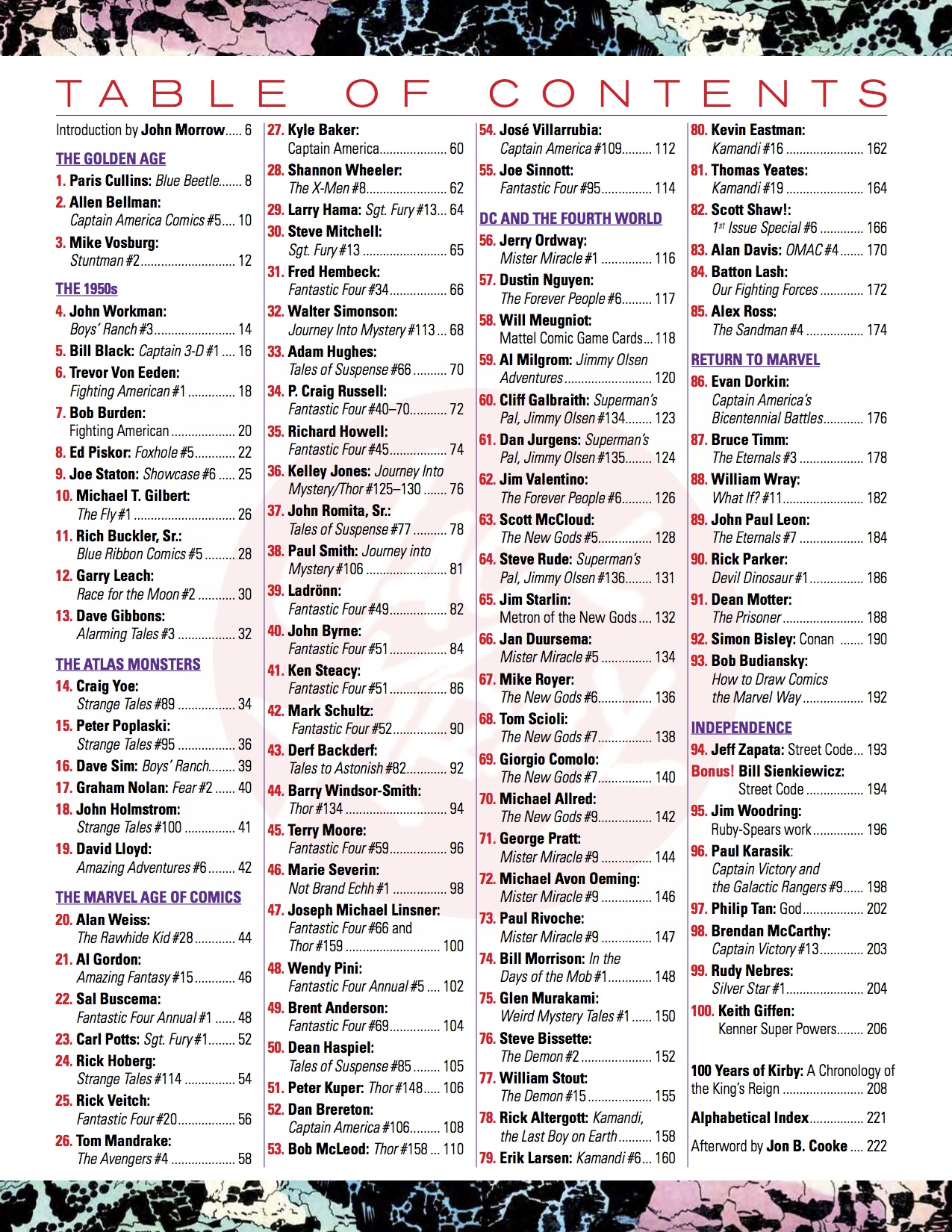
The 100 in the book
Dan: There had to have been more than 100 people you contacted. Who were some of the people you wished could have been included?
Jon: Certainly Neal Adams, Paul Pope, Arthur Adams, Frank Miller, Gary Panter, Ramona Fradon, David Mazzucchelli, Jim Lee and lots of other people. Some couldn’t be reached and others were just too busy, and also not everybody was affected by Jack Kirby’s art, as can be expected.
As in any work of this magnitude, hoping to corral a substantial number of contributors, some agreed to participate but went missing when deadlines arrived and others, much as they were eager to be a part of Kirby 100, simply couldn’t find the time.
This project was particularly — the word’s not “stressful,” but “intense” — when I had a firm list of 85 or so commitments, but the concept of this book was irrevocably anchored to a specific number of contributors — an even 100 — so I was kinda, sorta freaking out as we had a rock-solid deadline just as concrete to release this book on Jack’s birthday, Aug. 28, and we HAD to hit that number of testimonials.
This is when my pal Cliff Galbraith (who, as a no-slouch comic book artist himself, is included in our book) came to save the day, as his East Coast Comicon arrived just in time for me to pack up my bags and digital recorder, and to where I traveled to interview a bunch of artists who were eager to share, in person, their insights about the King.
Also, some of the testimonials were derived from phone interviews with those who had important thoughts to share but were too crunched by their own deadlines to write something up.

Dan: Of all the entries, which ones took you most by surprise?
Jon: There were a few that floored me. Ed Piskor, writer/artist of Hip Hop Family Tree, incisively ruminates about Kirby’s wartime experience and possible PTSD and how that likely influenced the King’s work. R. Crumb best buddy Peter Poplaski (one time Kitchen Sink Press art director and underground comix artist) shared an extraordinary cache of material, including his massive mural of Atlas monsters expertly mimicking the Kirby/Ayers look, with a testimonial referencing 12th century French abbot St. Bernard of Clairvaux, as well as pix of Pete’s brother arm-wrestling Jack!
But my favorite has to be Paul Karasik’s erudite entry about Captain Victory partly because I knew the back story. After giving me a “maybe,” the New Yorker cartoonist and How to Read Nancy co-author had an epiphany upon repeatedly reading the same storybook to his 3-year-old grandson and, at the last minute, Paul notified us that he wanted to be a part of the book. Also, the fact that the one-time RAW associate editor discusses Kirby in relation to early 20th century comic strip cartoonist F. Opper was very cool and unforeseen.
John and I were completely stunned to receive two completely unexpected graphic submissions: Bill Sienkiewicz’s inks over Kirby’s pencils on the King’s legendary two-page Street Code spread and an exquisitely rendered portrait of Jack by Alex Ross who casually—and generously—suggested we might, if inclined, include it in his testimonial. Suffice to say, with his kind permission, we upgraded the painting’s placement to frontispiece!
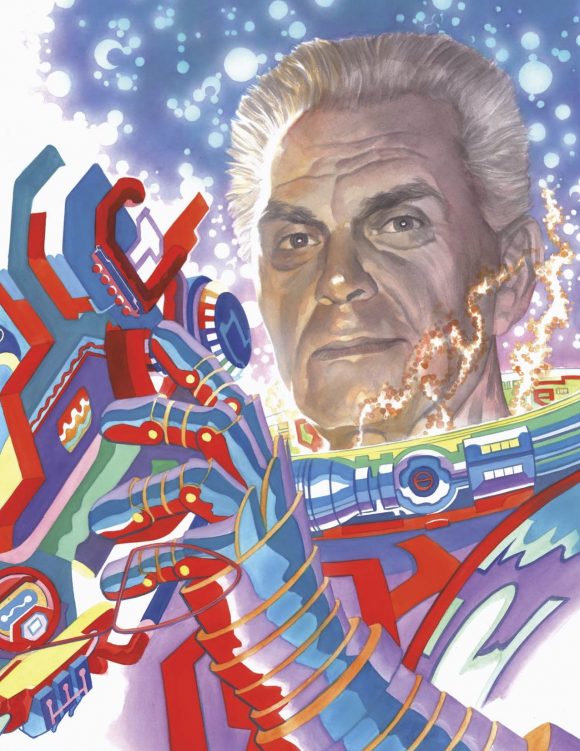
Alex Ross’ portrait
Dan: What’s your own background with Kirby?
Jon: Jack has always been one of my idols, certainly THE most important idol for me in comics, and I’m grateful to him for a variety of reasons. First, his Superman’s Pal, Jimmy Olsen #133 immediately transformed me from a casual reader of comics to a bona fide fanatic. You know that J.D. King cover from BLAB! that has a kid with his mind being blown while reading MAD comics? Well, yeah, that happened to me when I first read Kurtzman too, but it was equally my metaphorical reaction to being truly exposed to Jack for the first time, back in 1971. It was seminal and life-changing.
His Fourth World is, to me, one of the few true epics fraught with meaning in the comics realm. The more I learned about my hero Jack Kirby, the more Mister Miracle/Scott Free resonated with me and the more I understood that evil must be met with force and that freedom is worth the sacrifice. Captain America also made a profound impact. Weirdly, R. Crumb’s White Man Meets Bigfoot and Uncle Bob’s Midlife Crisis has come close (very close) to having the same visceral and lasting impact. Go figure. I guess it’s that their respective work feels so authentic, so true.
Jack was also a crusade for me to join, and his plight against Marvel to get back his original art in the ’80s made me see mainstream comics in a much more personal and political way. I became a devoted advocate for Jack and avid Comics Journal reader, and that reinvigorated an interest in comics just as I was starting to lose interest (probably because Kirby was just about finished producing work himself!).
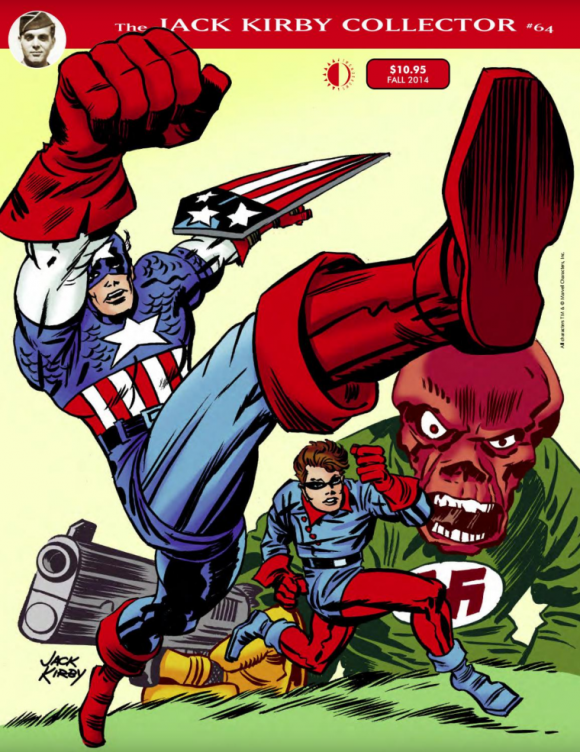
When he died, in 1994, I was crushed. I had previously written innumerable letters to him, usually at low points in my life and though I went to the library and found his mailing address in a California phonebook, I hadn’t had the courage to mail them. So I felt I needed to do something, and thank God for Kevin Eastman because his (lamented) Words and Pictures Museum almost immediately opened an exhibit in honor of Jack. It not only allowed me to make a pilgrimage of sorts but, in that GREAT bookshop, I discovered Chris Ware’s Acme Library, Scott McCloud’s Understanding Comics, Steve Bissette’s Tyrant, and so much more that immediately returned me to comics, in a big way. (Sorry to go on like this, but, well…)
Then, a year or two later, on my very first time surfing the internet, my very first search was— you guessed it— “Jack Kirby,” and I instantly discovered The Jack Kirby Collector. In a matter of weeks, I was regularly contributing to John Morrow’s great mag, enough to become associate editor, and I was his go-to interviewer. Anyhoo, that led to John offering me my own mag, Comic Book Artist, and a now almost quarter-century association (on and off) with TwoMorrows. For that, I blame Jack entirely.
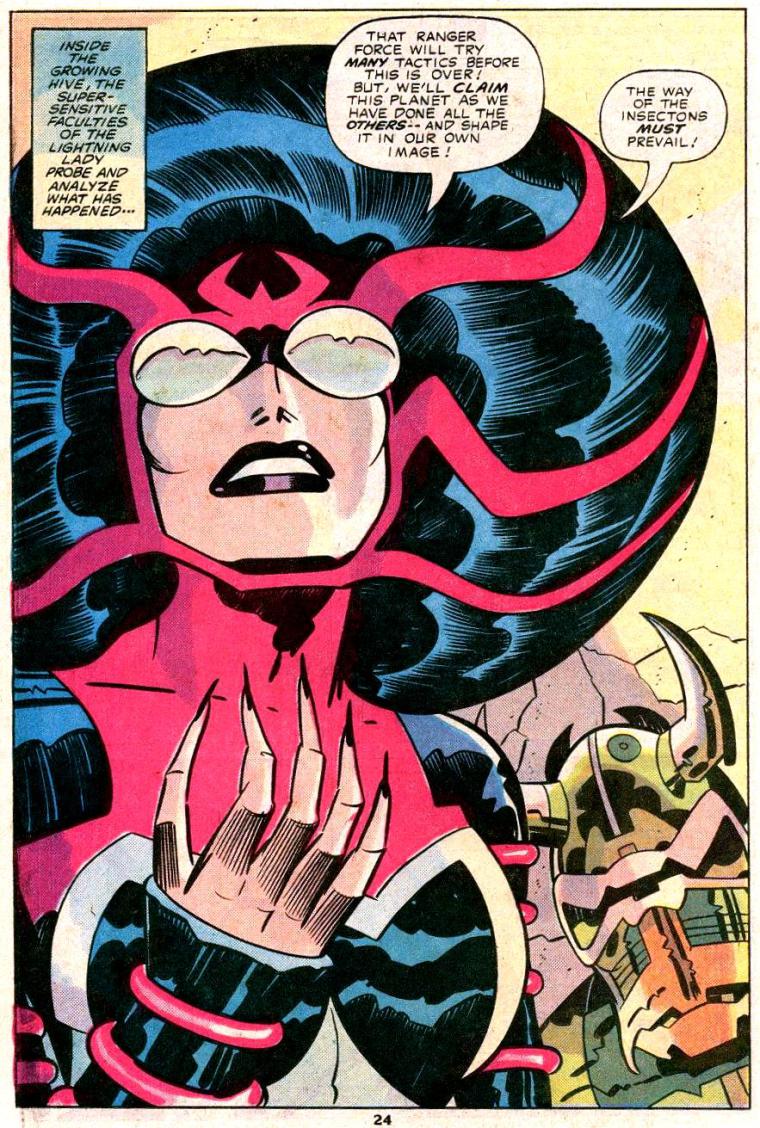
Dan: What is your own favorite Kirby piece?
Jon: Oy. There’s a Sophie’s Choice question… In my afterword (where I mainly focus on my meeting Jack at a 1972 comic-book convention), I cite a story from my favorite Kirby genre, romance comics, called “Different,” which is about anti-Semitism. I love it for a variety of reasons, but I have to say that Sgt. Fury #13’s teaming of Captain America and Bucky with the Howling Commandos was huge, and I am still in awe of “Himon,” from Mister Miracle.
As for favorite single page (which was the assignment given for contributors to choose), I still love above all the full-page Lightning Lady panel from Captain Victory and the Galactic Rangers (above). I’ll never forget turning to that image when I first opened the issue and feeling the power and majesty of Jack Kirby. The King indeed…
—
For the complete 13 DAYS OF KIRBY 100 Index of stories and features, click here.
—

August 27, 2017
Thanks Dan ! Great backstory in keeping with the content of this new book as well as all the material put out there by John Morrows and company. I have not put down the money for the book yet. This piece gives me impetus.